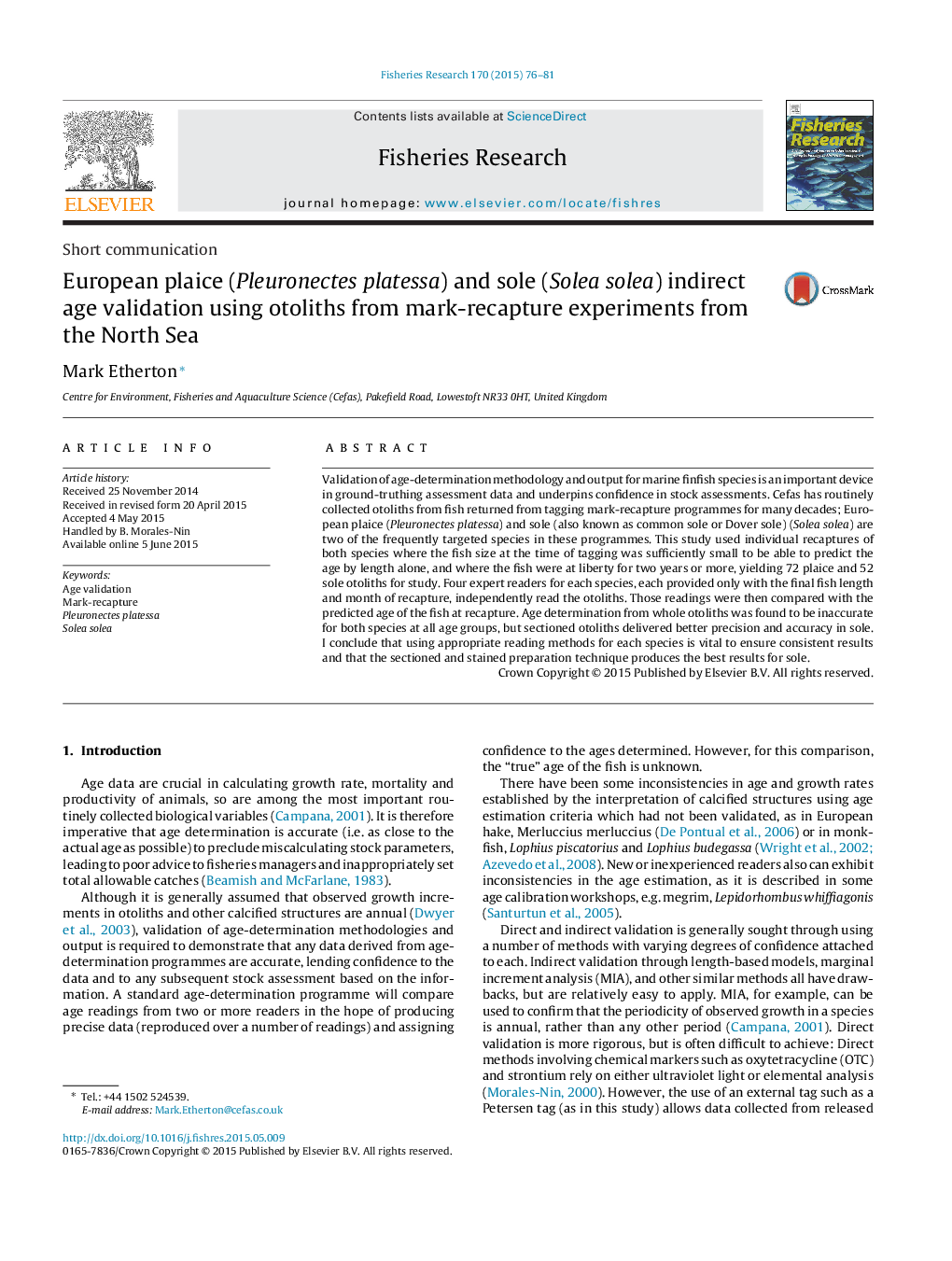| Article ID | Journal | Published Year | Pages | File Type |
|---|---|---|---|---|
| 6385492 | Fisheries Research | 2015 | 6 Pages |
â¢Age validation from mark-recapture experiments can be an important tool.â¢Familiarity with the otolith preparation method is vital in obtaining reader agreement.â¢Otolith preparation method has to vary with species for best results.
Validation of age-determination methodology and output for marine finfish species is an important device in ground-truthing assessment data and underpins confidence in stock assessments. Cefas has routinely collected otoliths from fish returned from tagging mark-recapture programmes for many decades; European plaice (Pleuronectes platessa) and sole (also known as common sole or Dover sole) (Solea solea) are two of the frequently targeted species in these programmes. This study used individual recaptures of both species where the fish size at the time of tagging was sufficiently small to be able to predict the age by length alone, and where the fish were at liberty for two years or more, yielding 72 plaice and 52 sole otoliths for study. Four expert readers for each species, each provided only with the final fish length and month of recapture, independently read the otoliths. Those readings were then compared with the predicted age of the fish at recapture. Age determination from whole otoliths was found to be inaccurate for both species at all age groups, but sectioned otoliths delivered better precision and accuracy in sole. I conclude that using appropriate reading methods for each species is vital to ensure consistent results and that the sectioned and stained preparation technique produces the best results for sole.
